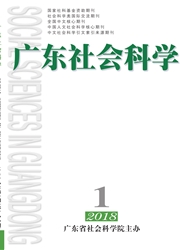

 中文摘要:
中文摘要:
标准的空间经济结构应该是多层级的中心-外围结构。作者在一个要素集聚与产业地理互动的解释模型下,分析了要素集聚影响城市层级体系的产业机理,认为要素集聚是资源空间配置的基本模式,也是城镇化的基本内容;市场潜力和异质要素的自我选择引致产业的时空变动,促进城市层级体系的形成;城市层级体系一般由单中心模式向多中心模式演化;特定城市通过产业升级可巩固和提升城市层级。
 英文摘要:
英文摘要:
The standard spatial economic structure of China is core periphery structure with different hierarchies. We build an explanatory model about the interaction between factors agglomeration and industrial geography. Combining urban system model of Fujita et al.( 1999)and the self-selection sorting model of Venables( 2011), we analyzed the industrial mechanism of factors agglomeration's influence on urban hierarchy system. We find that factors agglomeration promotes the formation of regional urban hierarchy system by the temporal and spatial changes of industry, and the mechanism is market potential and self-selection of heterogeneous factors. Regional urban hierarchy system always evolves from sole-center form to multi-center form. A city can consolidate and improve it's hierarchy by industrial upgrading.
 同期刊论文项目
同期刊论文项目
 同项目期刊论文
同项目期刊论文
 期刊信息
期刊信息
